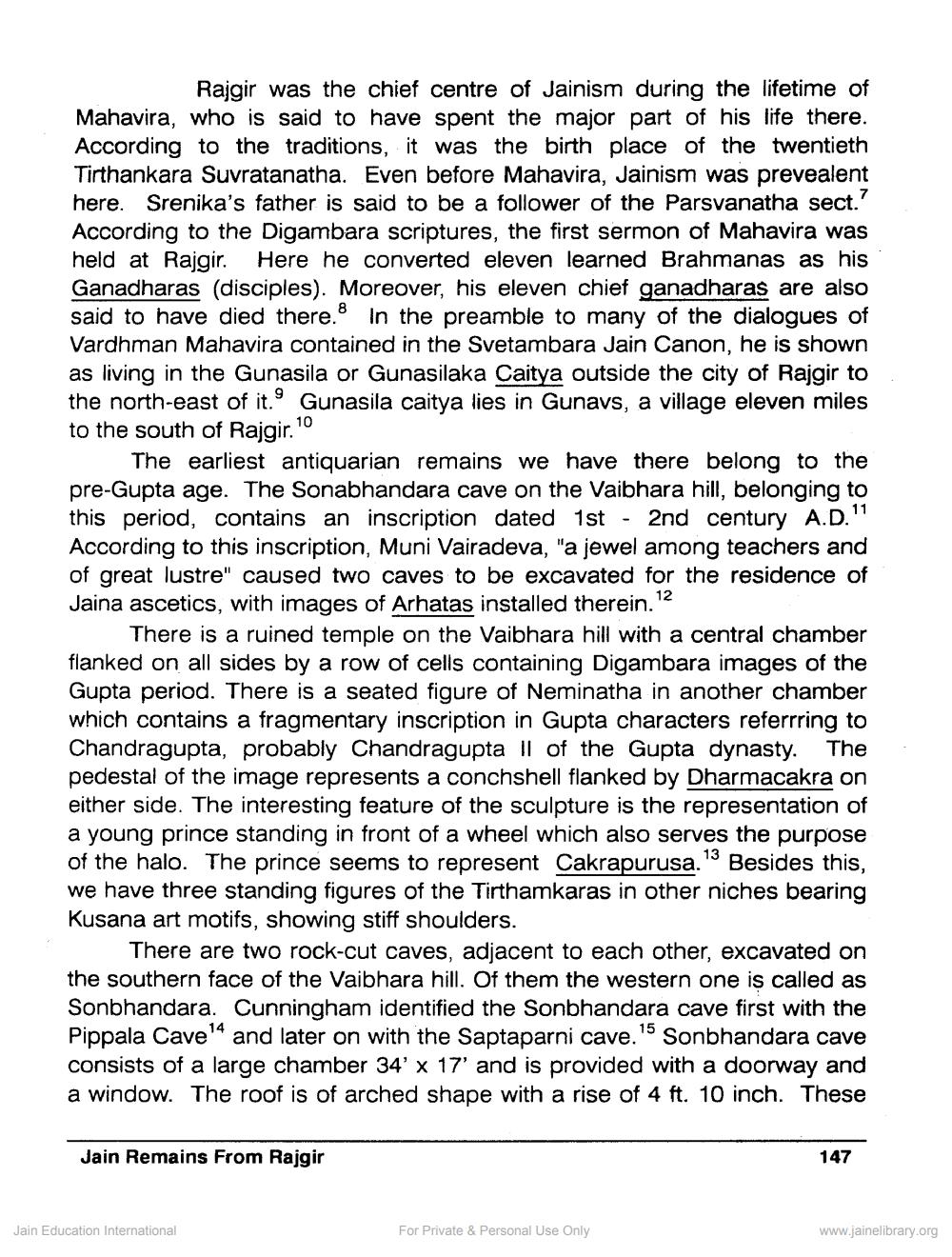Book Title: Jain Remains from Rajgir Author(s): Rajivkumar Publisher: Z_Vijyanandsuri_Swargarohan_Shatabdi_Granth_012023.pdf View full book textPage 2
________________ Rajgir was the chief centre of Jainism during the lifetime of Mahavira, who is said to have spent the major part of his life there. According to the traditions, it was the birth place of the twentieth Tirthankara Suvratanatha. Even before Mahavira, Jainism was prevealent here. Srenika's father is said to be a follower of the Parsvanatha sect.' According to the Digambara scriptures, the first sermon of Mahavira was held at Rajgir. Here he converted eleven learned Brahmanas as his Ganadharas (disciples). Moreover, his eleven chief ganadharas are also said to have died there. In the preamble to many of the dialogues of Vardhman Mahavira contained in the Svetambara Jain Canon, he is shown as living in the Gunasila or Gunasilaka Caitya outside the city of Rajgir to the north-east of it. Gunasila caitya lies in Gunavs, a village eleven miles to the south of Rajgir." The earliest antiquarian remains we have there belong to the pre-Gupta age. The Sonabhandara cave on the Vaibhara hill, belonging to this period, contains an inscription dated 1st - 2nd century A.D." According to this inscription, Muni Vairadeva, "a jewel among teachers and of great lustre" caused two caves to be excavated for the residence of Jaina ascetics, with images of Arhatas installed therein. 12 There is a ruined temple on the Vaibhara hill with a central chamber flanked on all sides by a row of cells containing Digambara images of the Gupta period. There is a seated figure of Neminatha in another chamber which contains a fragmentary inscription in Gupta characters referrring to Chandragupta, probably Chandragupta Il of the Gupta dynasty. The pedestal of the image represents a conchshell flanked by Dharmacakra on either side. The interesting feature of the sculpture is the representation of a young prince standing in front of a wheel which also serves the purpose of the halo. The prince seems to represent Cakrapurusa. Besides this, we have three standing figures of the Tirthamkaras in other niches bearing Kusana art motifs, showing stiff shoulders. There are two rock-cut caves, adjacent to each other, excavated on the southern face of the Vaibhara hill. Of them the western one is called as Sonbhandara. Cunningham identified the Sonbhandara cave first with the Pippala Cave and later on with the Saptaparni cave. Sonbhandara cave consists of a large chamber 34' x 17' and is provided with a doorway and a window. The roof is of arched shape with a rise of 4 ft. 10 inch. These Jain Remains From Rajgir 147 Jain Education International For Private & Personal Use Only www.jainelibrary.orgPage Navigation
1 2 3 4 5 6
